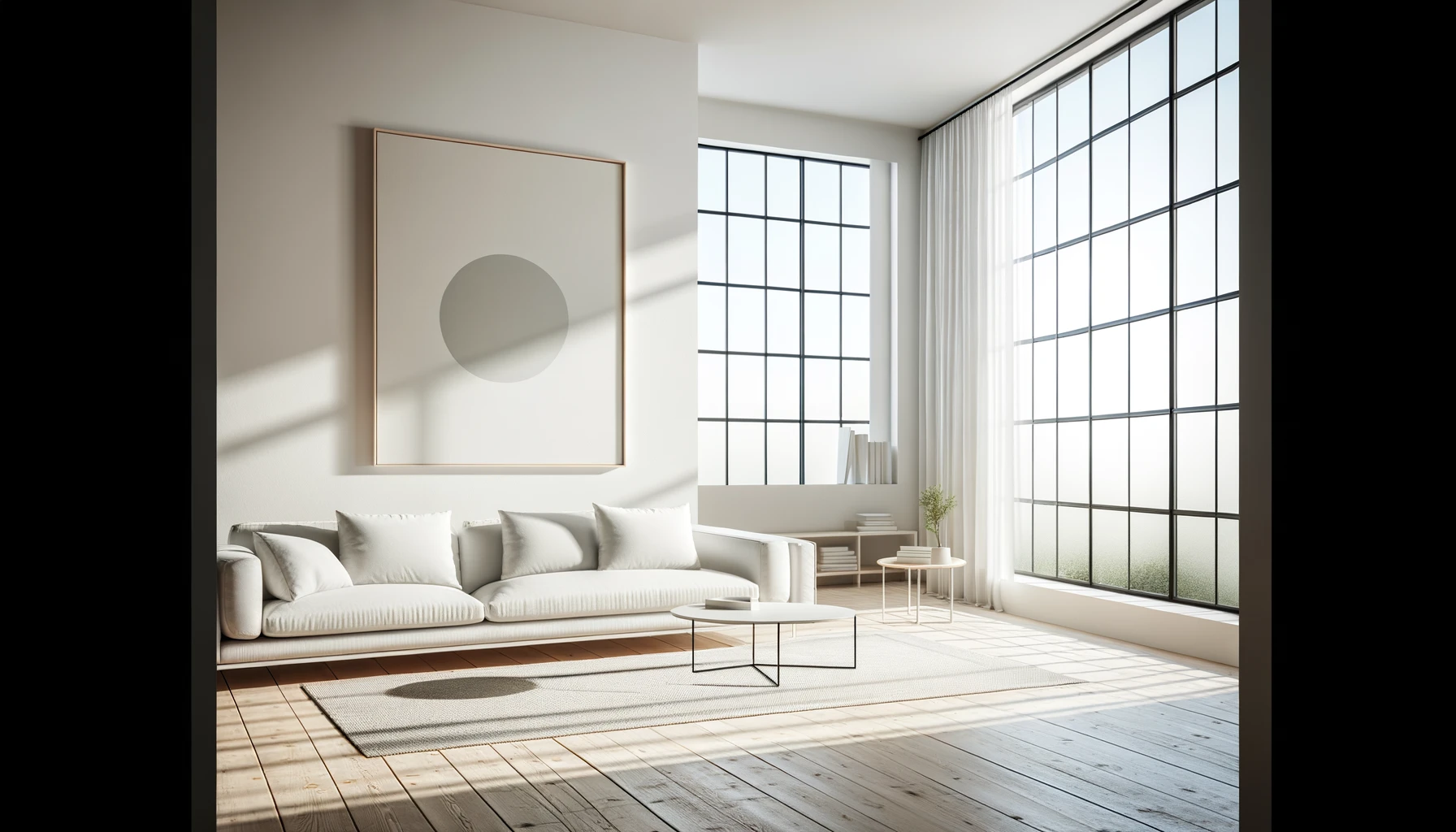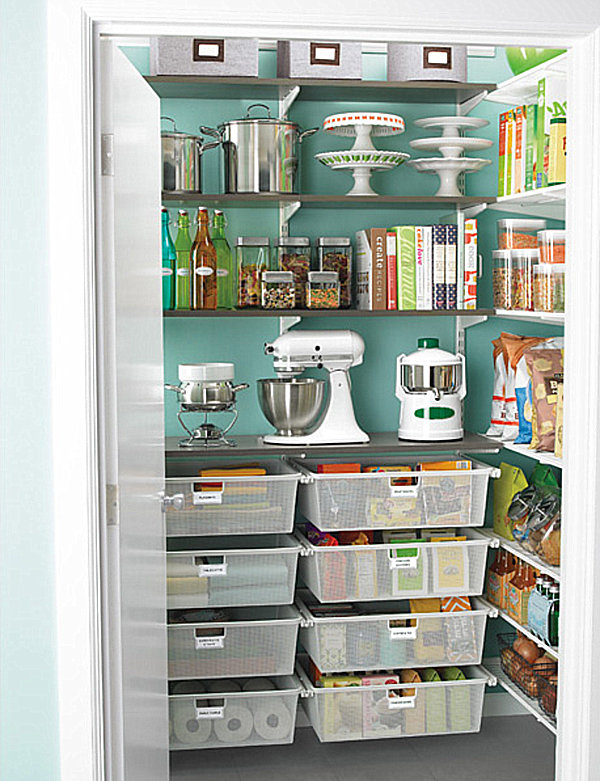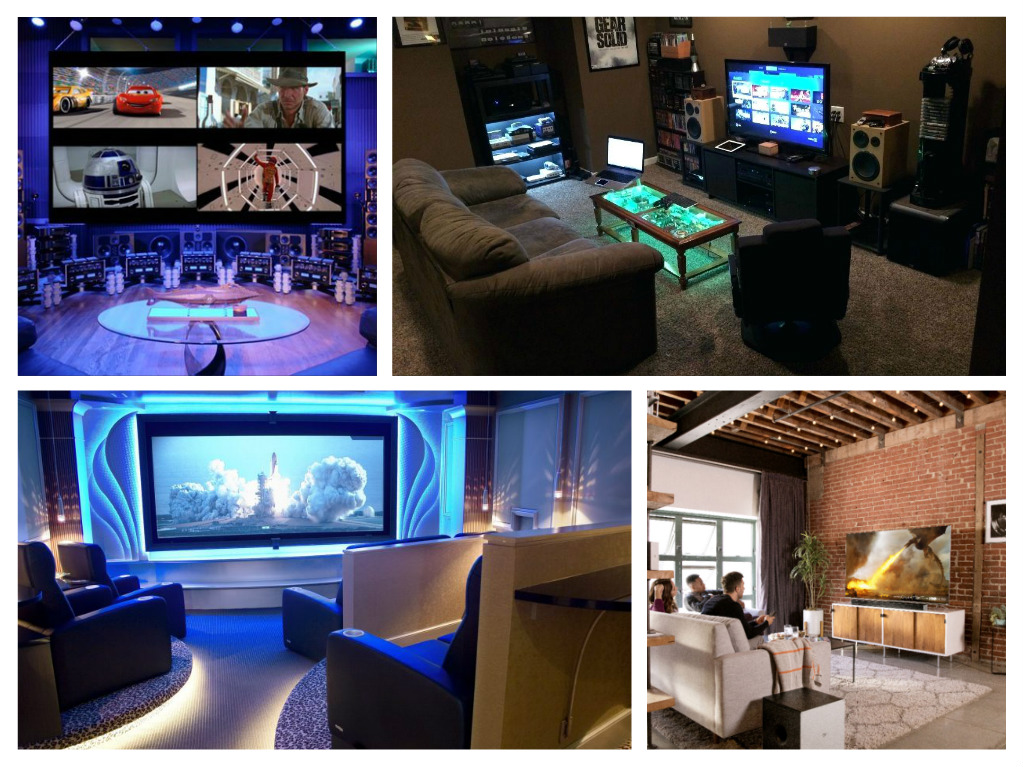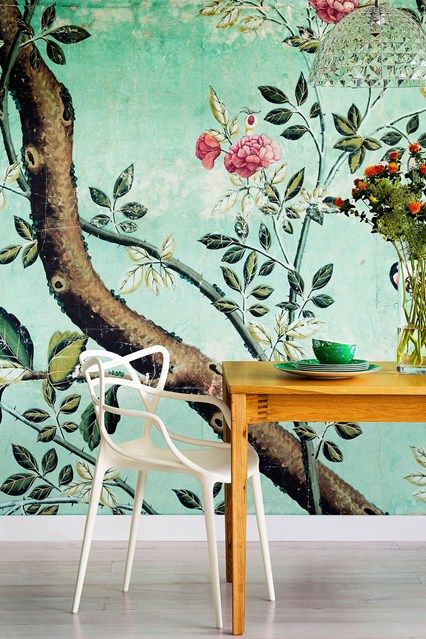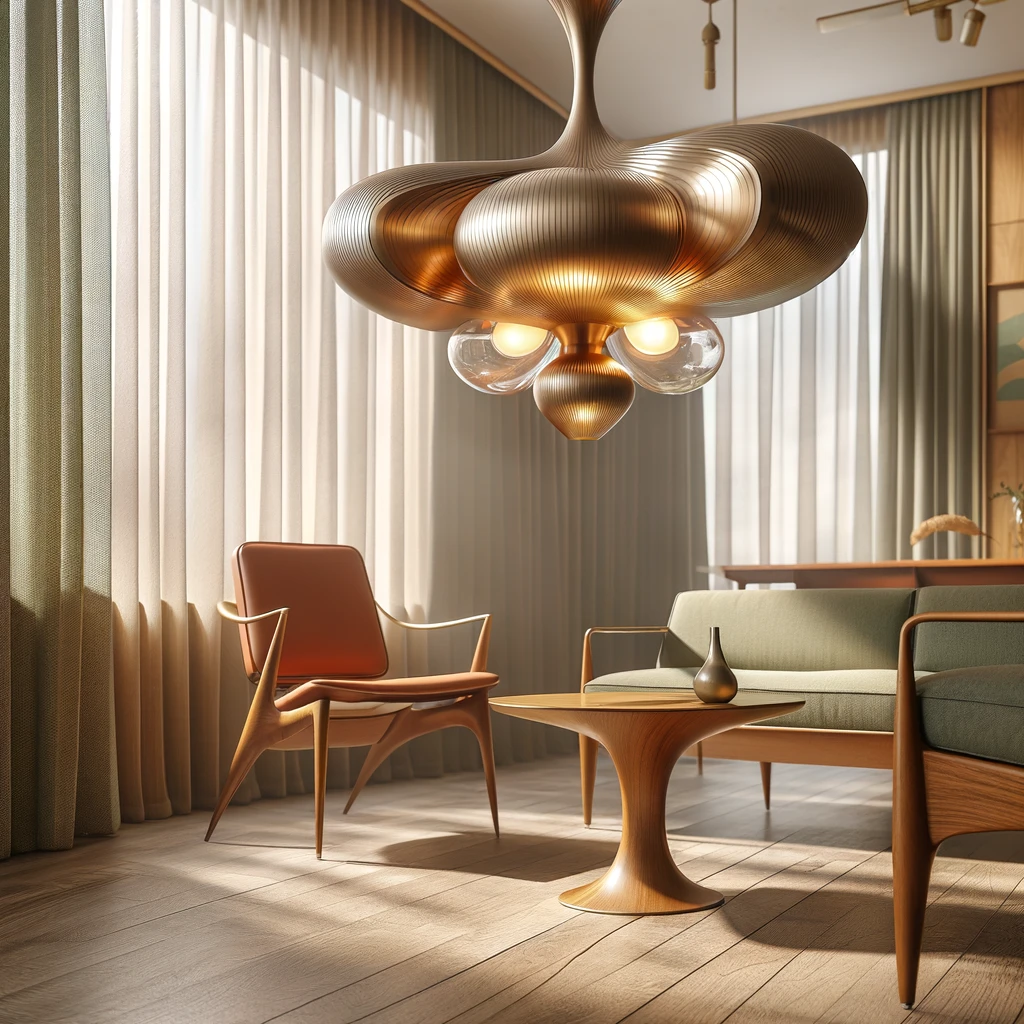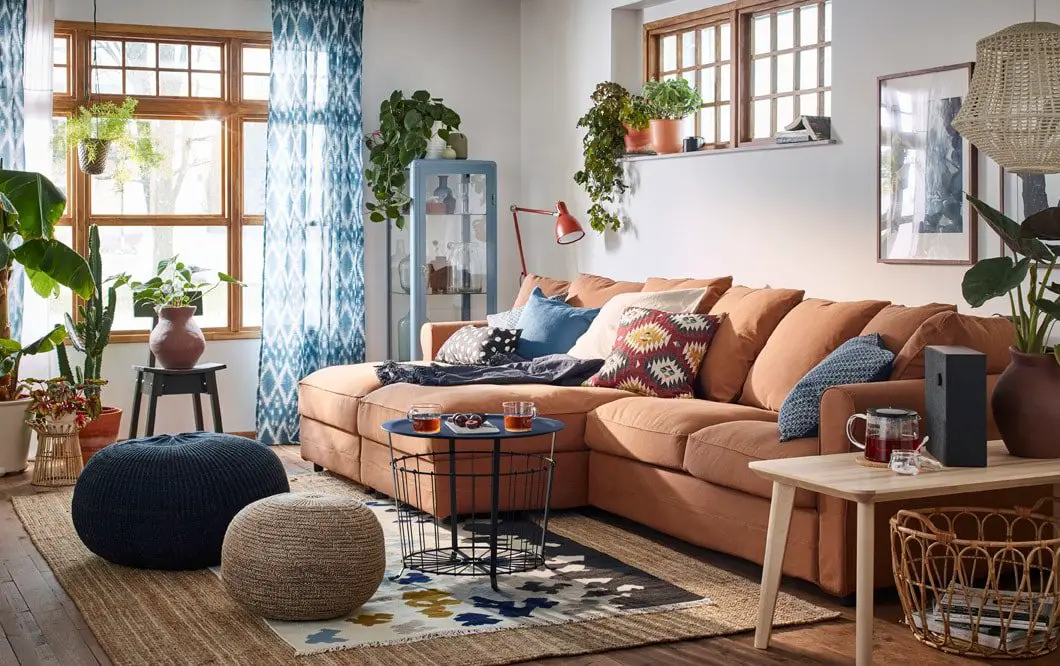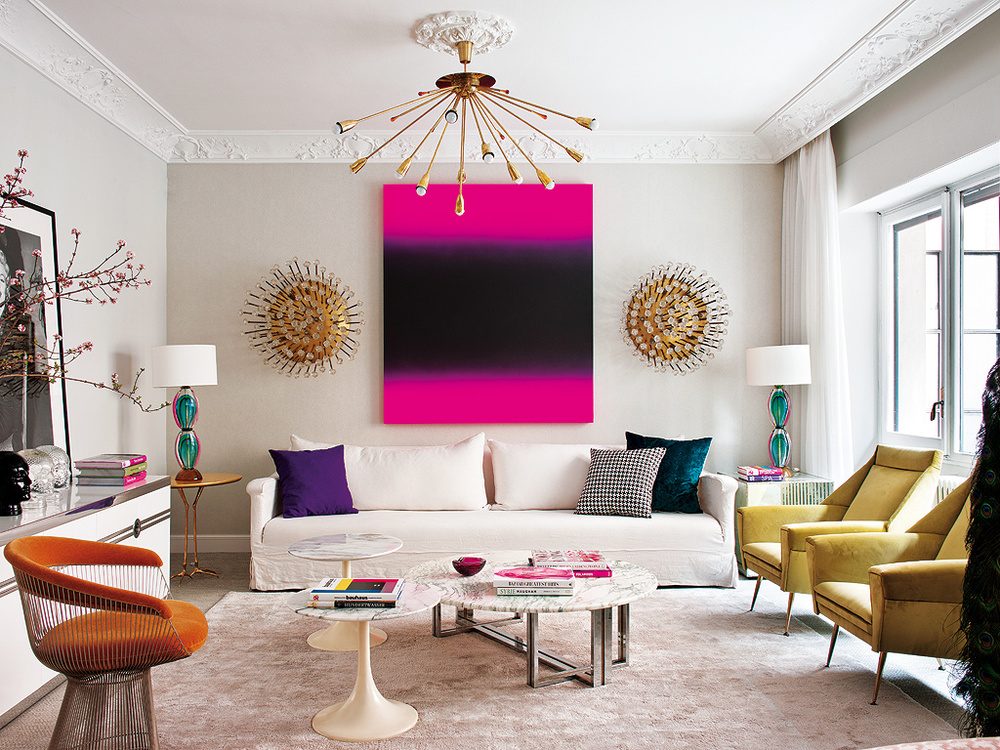Ever wondered why your mind feels cluttered when your space is a mess? The secret to inner peace might just be in the way you style your living room. Embracing minimalism can transform a chaotic hub into a haven of tranquility, offering not just an aesthetically pleasing view but also a mental breather. It’s more than just an interior design trend; it’s about crafting serene environments that promote calmness and clarity in our daily lives. By stripping down to essentials, minimalism invites harmony right where you need it most—your personal sanctuary.
Understanding the Core Principles of Minimalism
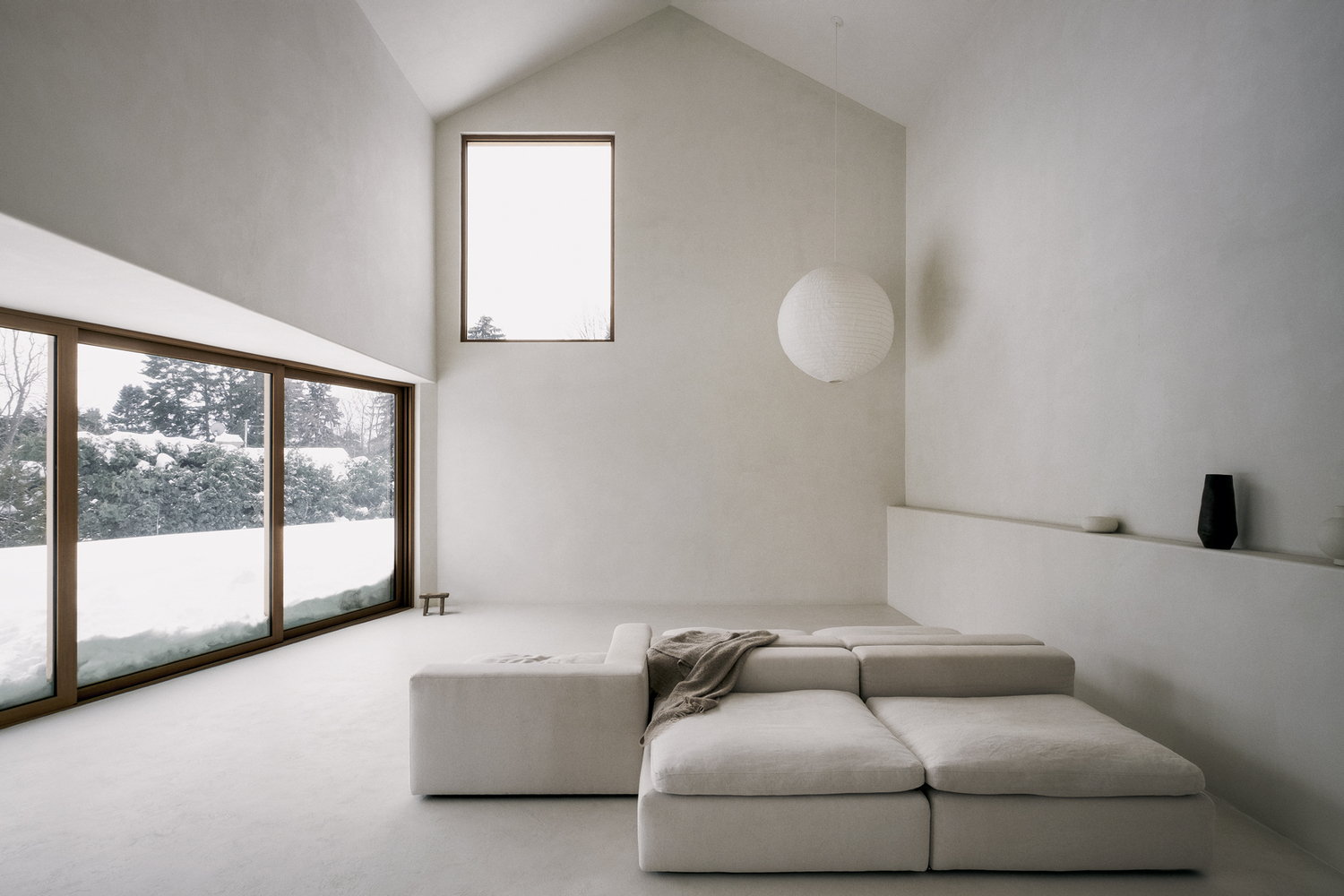
Simple Design
Minimalist living rooms focus on simplicity. This principle means using fewer decorations and sticking to basic colors and shapes. A minimalist space often features a neutral color palette with clean lines. The goal is to create a peaceful environment free from clutter.
The benefits of simplicity are clear. It makes spaces feel larger and more open. In a living room, this can mean choosing a simple couch over one with busy patterns or opting for plain walls instead of ones covered in artwork.
Functional Space
A key aspect of minimalism is functionality. Every item in a minimalist living room should have a purpose or use. Furniture that doubles as storage is common in these spaces. For example, an ottoman might open up to hold blankets or books.
Having functional pieces reduces the need for extra furniture, which keeps the space open and airy. This approach also makes cleaning easier since there’s less to move around when vacuuming or dusting.
Scientifically Proven Benefits of a Minimalist Living Room
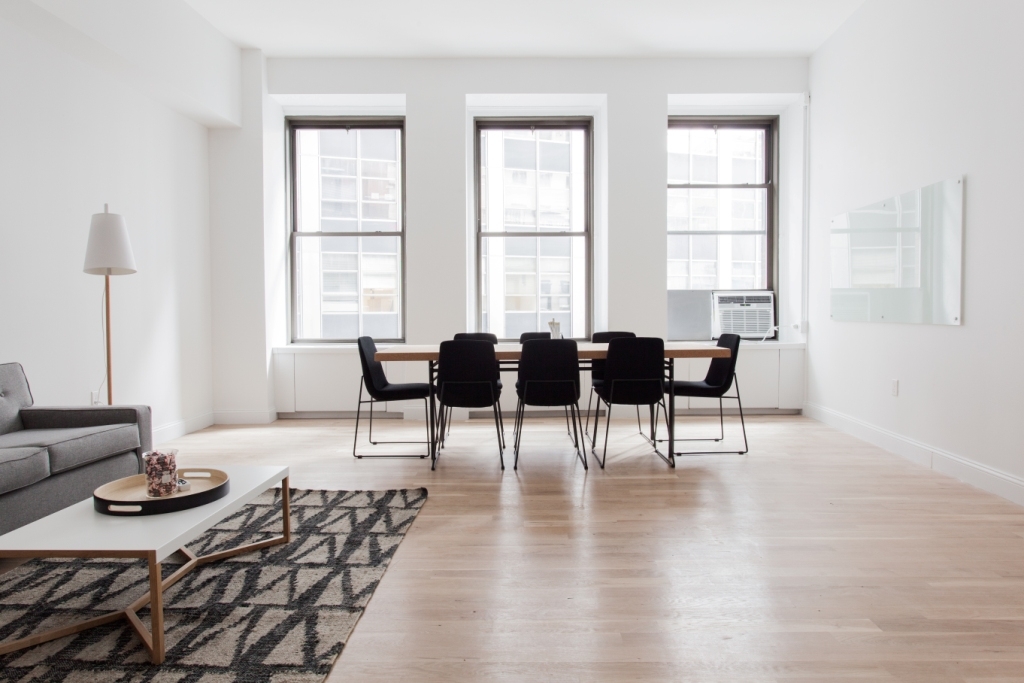
Mental Clarity
A minimalist living room can lead to mental clarity. Studies show that clutter can overwhelm the brain, causing stress and anxiety. A clean space with fewer distractions allows for better focus and peace of mind.
When you enter a room with minimal furnishings, your eyes have less to scan. This simplicity helps your brain process the environment more easily. Think about how calm you feel in an uncluttered space compared to one filled with items.
How Minimalism Reduces Stress and Anxiety
Mental Clarity
A minimalist living room can lead to a clearer mind. With fewer distractions, it’s easier to focus on what matters. This simplicity helps reduce stress levels. When there are less items to worry about, your brain isn’t overloaded with unnecessary information.
Reducing the number of objects in your space can also lower cortisol levels, which are linked to stress. Imagine coming home to a peaceful environment where everything has its place. This orderliness is calming and can help you unwind after a busy day.
Anxiety Relief
Living with minimalism means less clutter, which often results in less anxiety. A tidy room without excess stuff allows for more relaxed feelings. It’s like each item removed takes away a bit of worry with it.
Studies show that cluttered spaces can trigger anxiety because they create sensory overload. In contrast, minimalist spaces are soothing and promote tranquility. Think about how calm you feel in an open space compared to a crowded one.
Simplified Cleaning
Minimalist design makes cleaning easier too.
- Less furniture means quicker dusting.
- Fewer knick-knacks mean less tidying up.
This ease of maintenance contributes to reduced stress since cleaning becomes less daunting and time-consuming.
Having fewer possessions also means you spend less time searching for things lost amidst clutter—a common source of frustration and anxiety for many people.
Enhanced Well-being
Embracing minimalism in the living room doesn’t just make the space look better; it improves mental health as well.
People who choose minimalism often experience increased happiness and satisfaction.
They find joy not from material possessions but from experiences and relationships instead.
The benefits extend beyond personal feelings too:
- Your family may enjoy quality time together without distractions.
- Guests might feel more at ease in your serene living area.
The Financial Upsides of Embracing Living Room Minimalism
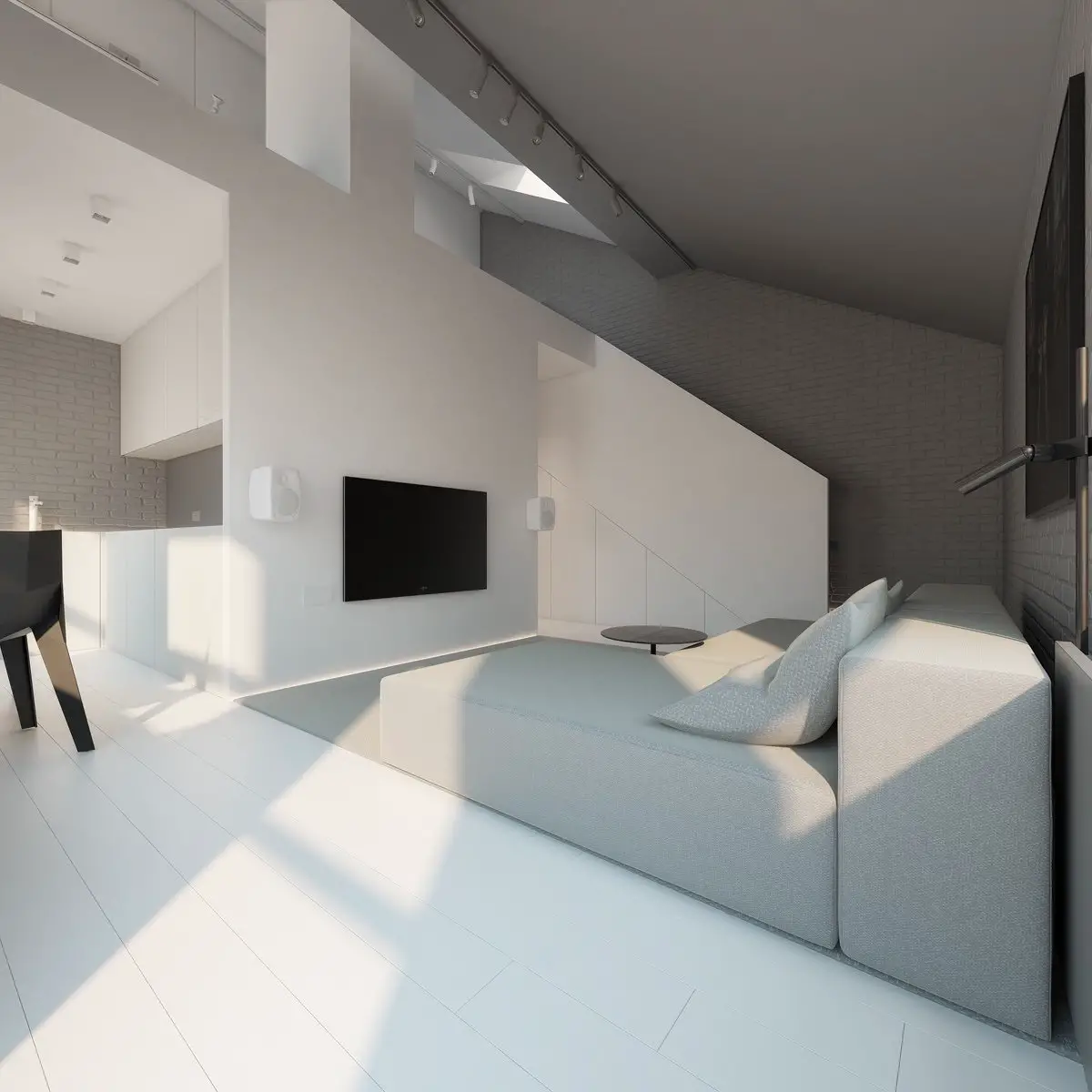
Cost Savings
Minimalist living rooms save money. Fewer furniture pieces mean less spending. This lifestyle avoids costly trends and fast furniture cycles. Instead, it focuses on quality over quantity.
Buying fewer decorations reduces expenses too. A minimalist space only has essential items, which are often multipurpose and durable. One high-quality sofa outlasts several cheaper ones that need replacing often.
Financial Freedom
Embracing minimalism can lead to more financial freedom. Less clutter means fewer desires for new items. When you’re not constantly buying things, you save money.
This saved cash can go towards experiences or savings goals instead of material goods. With a minimalist approach, many find they have more funds for travel or hobbies that enrich their lives far beyond what a new coffee table might offer.
Economic Sense
Choosing minimalism makes economic sense in the long run. It’s an investment in sustainability and personal finance health.
A minimalist living room requires less maintenance and cleaning products, saving both time and money over time. Furnishing your space with just essentials allows for better budgeting and prevents impulse purchases that quickly add up.
Effortless Cleaning and Tidying in a Minimalist Space
Easy Maintenance
Maintaining a minimalist living room is effortless. With fewer items, there’s less to clean. This means you spend less time cleaning and more on activities you enjoy. Imagine having just a few pieces of furniture with clear surfaces around you. Dusting takes minutes, not hours.
A minimalist space also discourages hoarding. You keep only what you need or love, which leads to less clutter over time. A decluttered room is easier to navigate when vacuuming or mopping the floor, making the chore quicker and simpler.
Simplified Routines
Minimalism streamlines your cleaning routine significantly. Instead of moving numerous trinkets for dusting, you wipe down one or two statement pieces. The simplicity reduces the steps in your cleaning process.
Moreover, minimalism can boost productivity by clearing mental clutter as well as physical clutter. When your space is tidy, your mind often feels clearer too. This clarity can make it easier to focus on tasks at hand without getting distracted by disarray.
Time-Saving Tidying
The time-saving aspect of tidying a minimalist space cannot be overstated. Consider this: fewer belongings mean that everything has its place and returns there after use — no more lost items or wasted time searching.
You might find that regular maintenance becomes so easy that deep cleans are needed less frequently than before adopting minimalism in your living room.
By embracing minimalism in the living room following financial savings discussed earlier comes another benefit: an increase in personal time due to reduced need for extensive cleaning rituals.
With each item removed during decluttering sessions comes additional seconds saved every day — these add up quickly!
The Link Between Minimalism and Increased Happiness
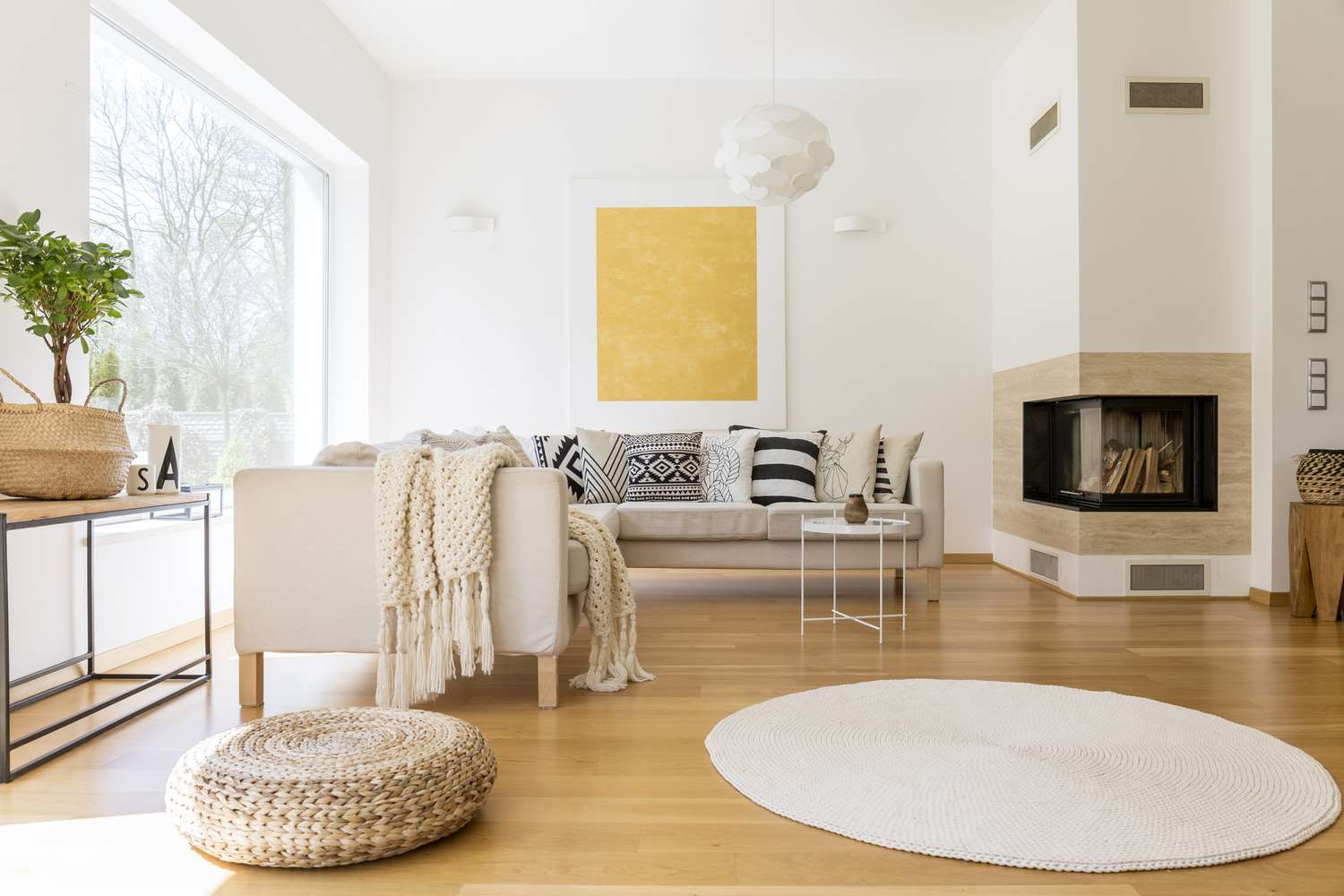
Mood Enhancement
A minimalist living room does more than just simplify cleaning. Minimalism often leads to a happier life. Many find that less clutter means less stress. A clear space can lead to a clear mind, which boosts mood.
Studies have shown that too many items in our surroundings can overwhelm us. It’s like having too many tasks on your to-do list. When you reduce these items, you feel lighter and more at ease. Imagine sitting in your living room with only your favorite couch and a few pieces of art that mean something to you; it’s peaceful.
Emotional Wellbeing
Embracing minimalism also has emotional benefits. It helps people focus on what truly matters in life: relationships, experiences, and personal growth rather than material possessions.
When we let go of unnecessary things, we make room for new opportunities and experiences. We learn contentment with what we have instead of always wanting more. This shift in mindset is key to long-term happiness.
For example, when someone donates old clothes or furniture they no longer use, they often feel good about helping others while also reclaiming their space.
Creating Free Space and Enhanced Play Experiences
Maximized Usability
Minimalism plays a key role in maximizing usable space within the living room. By focusing on fewer items, each piece of furniture or decor has a purpose and place. This approach not only clears physical space but also creates an environment that feels larger and more open.
When families choose minimalism, they often find that their living rooms transform into areas with multiple functions. A clear floor can double as a yoga studio or dance floor. With less clutter, there’s more room for activities that require space, like exercising or playing games.
Decluttered Playtime
For kids, decluttering can significantly enhance play experiences. Too many toys overwhelm children and make it difficult to focus on any single activity. But when parents reduce the number of toys in the living room, something magical happens.
Children become more creative with fewer options at hand. They might turn cushions into fortresses or invent new games with what’s available. This simplicity encourages them to use their imagination rather than relying solely on toy features for entertainment.
Creative Freedom
Free space is vital for fostering creativity and imagination not just in kids but adults too. An uncluttered living room invites people to fill it with their ideas rather than things. It becomes a canvas ready for whatever one might dream up.
In minimalist spaces, people often feel freer to think outside the box because there are fewer distractions around them.
- Space allows thoughts to flow without interruption.
- Without excess toys, children invent new ways to play.
- Open areas provide ample storage solutions hidden from view.
- Clean surfaces offer inviting places for crafting projects or artwork displays.
By embracing minimalism in your living area:
- You create opportunities for imaginative play.
- You foster an environment where creativity thrives.
- You encourage family members to interact in shared activities due to increased available space.
The benefits of minimalism extend beyond just physical aspects; they touch upon mental well-being too—reinforcing lessons learned about happiness from earlier discussions on minimalistic lifestyles.
Minimalism’s Positive Effects on Physical Health
Clutter-Free Living
A minimalist living room does more than just look good. It can actually boost your physical health. When you reduce clutter, dust and allergens have fewer places to hide. This means the air quality in your home improves, which is great for your lungs.
Living with less also reduces stress. High stress levels can harm your body over time. With minimalism, there’s less to clean, organize, and worry about. This simpler lifestyle leads to a calmer mind and a healthier body.
Restful Sleep
A minimalist space promotes better sleep too. Imagine a bedroom with only essential furniture and soft tones that soothe the eyes before bed. There are no piles of clothes or stacks of books to distract you or cause anxiety about tidying up.
Studies show that people sleep better in clean environments because they feel more at ease—both consciously and subconsciously—and this has direct effects on health through improved restfulness.
Healthier Lifestyles
Minimalist design often includes plenty of natural light and open spaces that encourage movement throughout the day—a key component of a healthy lifestyle.
By having fewer distractions around, it becomes easier to focus on activities like yoga or meditation right in your living room without needing extra equipment or space.
Furthermore, when there is less stuff around you’re more likely to venture outside for entertainment rather than staying indoors—a change that often leads to increased physical activity.
Embracing Freedom and Maximizing Time in a Minimalist Living Room
Liberating Spaces
Minimalism in the living room can be a breath of fresh air. When you strip away excess, you’re not just decluttering your space; you are also simplifying your life. A minimalist living room has fewer distractions. This means more focus on what truly matters.
Imagine walking into a room with just a comfortable sofa, essential lighting, and maybe one piece of meaningful artwork. The absence of clutter is calming. It creates an environment where stress levels drop and relaxation begins.
Meaningful Activities
In our busy lives, finding time for hobbies or family can be hard. But with minimalism, we create extra time by reducing the need to clean and maintain numerous items.
A minimalist living room invites activities like reading or playing games with kids. You could spend hours lost in conversation without the urge to tidy up constantly interrupting these precious moments.
- Spend less time cleaning.
- More quality moments with loved ones.
- Space that encourages peaceful activities.
Time Maximization
The gift of time is one of the greatest benefits minimalism offers our homes and lives. By owning fewer possessions, there’s less to manage daily—this results in saving chunks of valuable time each week.
With this saved time, people often find they sleep better because their minds aren’t racing through tomorrow’s chores as they lie down at night. They have more freedom to pursue passions or simply enjoy being present in their environments without feeling overwhelmed by belongings.
Conclusion
Embracing a minimalist living room isn’t just a design choice—it’s a lifestyle that can declutter your space and mind. You’ve seen how less really can be more, from calming vibes to financial savings and better health. Imagine coming home to a serene space where every item has purpose and there’s room to breathe. That’s the minimalist promise: more joy, less fuss.
Ready to leap into a simpler life? Start peeling away the excess in your living room. You’ll be amazed at how the extra space opens up possibilities for what truly matters. Go on, give minimalism a shot—your peace of mind is waiting.
Frequently Asked Questions
How does a minimalist living room reduce stress?
A minimalist living room cuts down on clutter, which in turn can lower stress levels. Less stuff means less to worry about and maintain.
Can minimalism in my living room actually save me money?
Absolutely! Embracing minimalism often means buying fewer things, leading to savings. Plus, choosing quality over quantity can mean less frequent replacements.
What are the cleaning benefits of a minimalist living room?
With fewer items around, there’s simply less to clean. This makes tidying up quicker and more effortless—leaving you with more time for yourself.
Is there evidence that minimalism can make me happier?
Yes! Studies suggest that reducing clutter and embracing simplicity can enhance your mood and overall sense of well-being.
How does minimalism impact physical health in the living room?
Minimalist spaces are easier to keep dust-free and clean, contributing to better air quality and potentially improving respiratory health.
Does having a minimalist living room create more space for activities?
Definitely. By owning fewer furnishings, you open up the floor plan for play or exercise—boosting both fun times and fitness opportunities!
